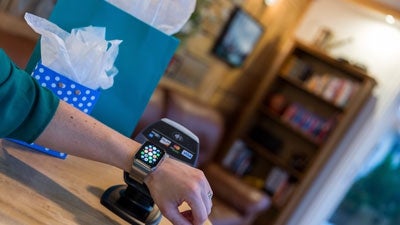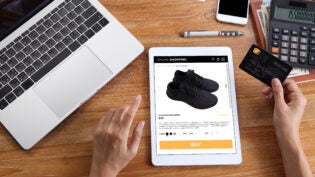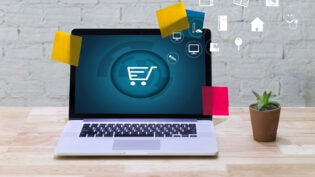
Shoes that provide directions to your destination, trousers that generate enough kinetic energy to charge your phone, a shirt that functions as a hard drive…
Wearable devices such as these have been around, or in the making, for a few years now, yet there still appears to be a lot of unfamiliarity as to the reach and potential of this new technology—from consumers and businesses alike.
All that may be about to change this year. With the launch of the Apple Watch, which is to be followed by a new line of fashionable wristwatches from Jawbone and Nike, Juniper Research has forecast that wearable advertising spend will reach $1.5 million by the end of this year.
That’s a massive new market, and one that marketers and retailers alike would do well to embrace. Although still in the early adoption phase, what can businesses do to enrich the retail experience once these devices become more popular?
Hyper Personalized Promotions and Offers
One of the obvious benefits of wearables is that they never leave the customer’s body. Businesses are thus able to continually collect very granular data about the user—data such as their in-store shopping habits and frequency (e.g. common dwell times, showrooming habits), as well as more personal (some might say creepy) information, such as what you “like,” what your browse, and what your body type is.
This data can then be fed back to retailers in real time, meaning their advertising strategy can become more acutely targeted.
The Apple Watch is a great example of a device that acts as the interoperable link between brand and consumer. It measures the heart rate, caloric intake and body state of the user, while also encouraging them to input their own data periodically throughout the day.
This data, combined with GPS technology, will enable the future of mobile advertising to be more personal than ever.
Upon completion of a specified customer goal—for example, if the user has burned off their specified calorie count for the day—a text message could be automatically delivered offering a discount on a nearby deli or food store.
This combination of automation and personalization creates a deep connection with the customer.
Working in Tandem with the Internet of Things (IoT)
Although wearables will bring benefits simply by themselves, for the user experience to be truly exceptional these devices will need to work in conjunction with a growing ecosystem of Internet-enabled objects and applications.
Through integration with IoT, wearable tech will be able to take personalized advertising into a whole new paradigm.
Based on data being pushed out from the user’s smart devices—operating in conjunction with the IoT applications close by—wearable tech will soon be able to send ads and reminders that are consistently unique, realistic, and helpful, perfectly timed throughout the day, dependent on present location and context.
Let’s imagine you’re a digital marketer for a taxi service. A consumer’s car in the local area has just broken down, sending an alert to your data system, which is constantly collecting data from local IoT and wearables. The system assumes this person will be in need of a pickup, so an ad gets automatically triggered and delivered to that person’s wearable device, offering to send a taxi from a nearby outlet, and with a phone number they can call.
You might also be able to infer further information from the driver’s situation: if it’s late at night, for example, your ad could suggest possible destinations to ring the insurance company, like a late-night café; or you could suggest a few hotel to call, if the engine breakdown looks serious.
Marketing here becomes an integrated experience, with companies being able to demonstrate how they can fit naturally into people’s everyday lives.
A Seamless, Omni-Channel Journey
In addition to integrating with IoT applications, wearables also have the benefit of being able to seamlessly connect what were previously disparate user devices.
Smartwatches, for example, rather than replacing another touchpoint, are able to act as a natural extension of the entire online or mobile brand experience. As such, they act as a fully integrated touchpoint in the customers’ path to purchase.
This means that marketers can begin crafting individual purchasing paths much more effectively, leveraging things that they know customers already use and like and inserting their own brand messaging.
For example, once marketers understand an individual customer profile, they can begin creating bespoke shopping paths for that person, offering a consistent and cohesive messaging across wearable devices.
Author: Katie Jameson is the senior marketing manager at ResponseTap. She writes about B2B tech and marketing solutions. Twitter: https://twitter.com/ResponseTap
Published: May 28, 2015
3578 Views
3578 Views












